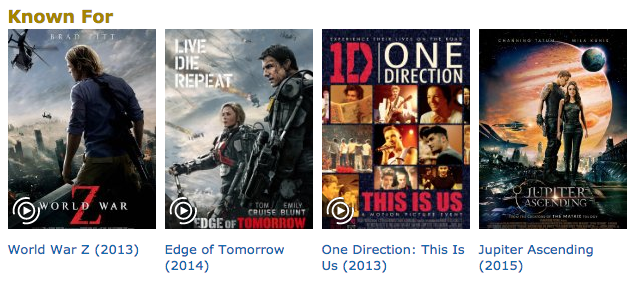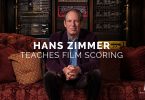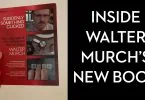How To Become an Assistant Film Editor
If you are an aspiring film editor wondering how to make it to the big time, the chances are you’ll start as a runner and work your way up to Assistant Film Editor. In the BAFTA produced video above Trainee Editor Ruth Antoine shares how she found her way onto the post production team of Les Miserables. One of the best thoughts I’ve heard recently that everyone and anyone who is wanting to ‘make it’ in the film industry should memorise came from my interview with 2nd Assistant Film Editor Rob Sealey which was…
Don’t be intimidated by the film industry.
Tips for Assistant Film Editors
Assistant Editor gif blog and all round post-production joke site Render Please.com, has some good advice for those who want to work in features as an AE (Assistant Editor). The whole article is well worth a read, especially the last few paragraphs.
I work in features as a 1st Assistant Editor. I started in Dubs and then came up Assisting through commercials & television… Some good programming and some bad, but all good learning. Making the jump across mediums to film wasn’t easy – but I persevered and got there. It took time. I had to be humble and I had to take a career step backwards when I moved to film (and at that stage I had eight years Assisting experience).
These days, I hire trainees who show enthusiasm. I can’t hire everyone I meet, so I look out for people who seem honest, genuine, eager, and patient. I need someone who will do the hours and make the coffee without grumbling. I need someone who can be quiet and listen – listening is one of the best things a trainee can do. WATCH everything, write it all down and DON’T have an ego.
In this piece from PostPerspective.com Brady Bretzel shares his Top 5 Assistant Editor Life Skills and a little of his personal journey into the world of post production. What’s interesting about Brady’s journey, and is an important thing for anyone following to note – is how early on he made his first contacts and how long they’ve lasted. Internships and first impressions count!
During college I started as an intern on a Fox talk show called On Air with Ryan Seacrest, where I was able to make some very important contacts — some of whom I’m still in contact with 10 years later. Once we were told the show wasn’t renewed people started to flee and find work elsewhere (which happens a lot). It was the perfect time for me to swoop in and get at least a few months of real work under my belt before the show went officially dark.
Grab some very practical and very helpful tips on how to go about syncing and slating dailies in this post on editor Judith Allen’s blog. Although these are aimed at crew using the slates, it’s full of invaluable information for assistant editors too.
File Management: Please don’t delete files from the card/ disk drive before delivering it to edit. Even if the shot was only a few frames long from a mistakenly pressed button. If there’s a gap in the numbering, we’ll worry about what should be there – if it’s a one take wonder that brings EVERYTHING together. Especially if we don’t get a note about it. And then there’ll be emails, and follow-ups, and checking of camera cards….. you can just leave it there. It’s fine.
Finally, to round out this section on tips PBS has a very detailed interview with an assistant editor Colin Nusbaum. What’s particularly helpful about this conversation is that Colin shares some of the fine-grain detail of his day to day activities and workflow preferences, including things like his file naming structure and other ‘secret sauce’. This is actually the second instalment of a three part interview, check out Part 1 and Part 3 here.
What is one thing they should never do? As an assistant you should not actually play with the editor’s sequences or cuts. When invited to do so, it can be great to make selects sequences, assemblies and rough edits, but there is nothing worse than an assistant who has their hands in the editor’s sequences for no reason.
What it’s like to work on a feature film
No Film School has a good interview with feature film editor Carsten Kurpanek in which he shares a little bit of his journey into the industry having started as a complete ‘outsider’ as a tax officer in Germany, before making his way to LA to see his fame and fortune. It’s a good long interview and well worth a read. It’s interesting to note that career progression takes dedicated effort at every stage – Carsten comments that even though he has 4 feature film credits under his belt as an editor, he has to make the conscious decision to turn down AE work to keep moving forward. The image above is a screen grab of his Earth to Echo Avid Media Composer timeline.
NFS: Can you describe your typical workday as an AE on a feature?
Carsten Kurpanek: Features have a very linear approach. On the first day, you set up the editorial, make sure the equipment works. Talk to the editor, see where he wants the couch, where he wants the Avid — all the little things. You talk to all the vendors, say hi, say send me your spec sheets and stuff like that. Once the shooting starts, you make your coffee (or your P.A. if you have one), and then you get the dailies from the post house. There’s a lot of parts to that, it’s not just the footage. You get a lot of paperwork, like from the camera assistant’s reports. There’s a continuity supervisor, who provides you with a line script and a facing page. And she marks down on each facing page with lines to denote which cameras were rolling. And if the director likes a take, she would circle it, and it becomes a circle take. Nowadays, since everything is shot digital, we get everything anyway. It used to mean more when the film was printed, because what wasn’t circled wasn’t printed.
One of the good things about the film industry is that most people remember that someone gave them a chance, a break, and feel duty bound to help those working their way up, in the same fashion. The Sally Meneke Memorial Editing Fellowship is a great example of that spirit in action. Indie Wire has a nice article on the 2014 recipient of the award’s experience of another editorial training ground – Sundance Directors Lab. PS If you don’t know who Sally Meneke was, she was Tarantino’s editorial partner in crime.
My experience at the Labs was built from many small moments of inspiration and tough lessons, that when combined created something bigger than all of the individual pieces. But all of these lessons come while working hard. Really, really hard. There is no waiting around for inspiration to strike. Everything about the program is set up to make sure everyone involved gives it their all. The benefit is that in the process you find yourself reinvigorated in your journey as a storyteller.









